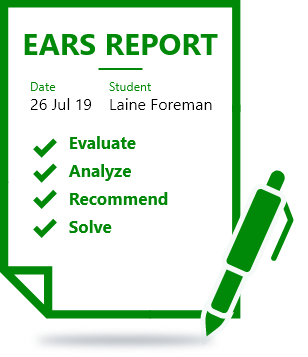Know more
Why ProgressCharter?
Schools have the most important job in the world, ensuring that every child learns the skills needed for a successful future. But that job is very difficult. According to recent reports from https://www.nationsreportcard.gov/, most U.S. students are still not proficient in the “3 Rs” reading, (37%) writing (27%) and arithmetic (25%), even after completing 12 years of schooling!
Proficiency is a prerequisite for success in any profession. As a former graduate school professor, I saw far too many students who did not know how to study effectively. Studying or “Self-Teaching,” is a complex skill that depends on proficiency in the three Rs, which they had still not mastered, even though they had undergraduate degrees. Sadly, universities are not designed to teach students how to study, much less the 3 Rs. Professors assume that students have already learned these skills in their previous years of schooling. That assumption means that most college graduates, even though awarded the degrees and certifications that employers require, lack the professional expertise needed by employers.
Schools need technology that will ensure every student’s success. That technology will have the following features:
1) A Pragmatic Change Process that allows the school to
a. Evaluate each student’s progress and quickly identify when a student is not making efficient progress
b. Analyze causes of inefficient progress which will be found in performance problems of the student’s providers.
c. Recommend changes in provider resources, training, and management
d. Solve provider performance problems by designing and implementing the recommended solutions.




2) Every participant is both a provider of resources to other participants and a recipient of resources from other participants, allowing each of them to work together so that every student makes efficient progress.


3) A frequent, accurate, sensitive, measure of student progress, specifically the efficiency of each student’s progress, immediately notifying staff and parents when a student is not making efficient progress. Providers need to know as soon as possible when a student is struggling. Progress is a measure of improvement in the student’s skill. The most sensitive measure of progress will show improvement in both the accuracy and speed of the student’s performance. The efficiency of the student’s progress is a measure of the student’s improvement per the amount of student interaction time with resources provided by the teacher.

4) A comprehensive, evidence-based analysis of the causes of inefficient student progress, provider performance problems. Student progress depends on teacher, tutor, and parent performance, which in turn depends on the performance of their supervisor, staff trainer, and program designer.
5) Recommendations for changes in teacher resources, training, and management based on the identified causes of the teacher’s performance problem.
6 )Automatically-Generated Evaluation, Analysis, Recommendation and Solution (EARS)Reports to facilitate the pragmatic change process. The school needs to know when a student is struggling, why he or she is struggling, what changes it needs to make in teacher resources, training, and management, which changes were made, and most importantly whether those changes have ensured that the student is once again making efficient progress.


 Login
Login English
English Spanish
Spanish




